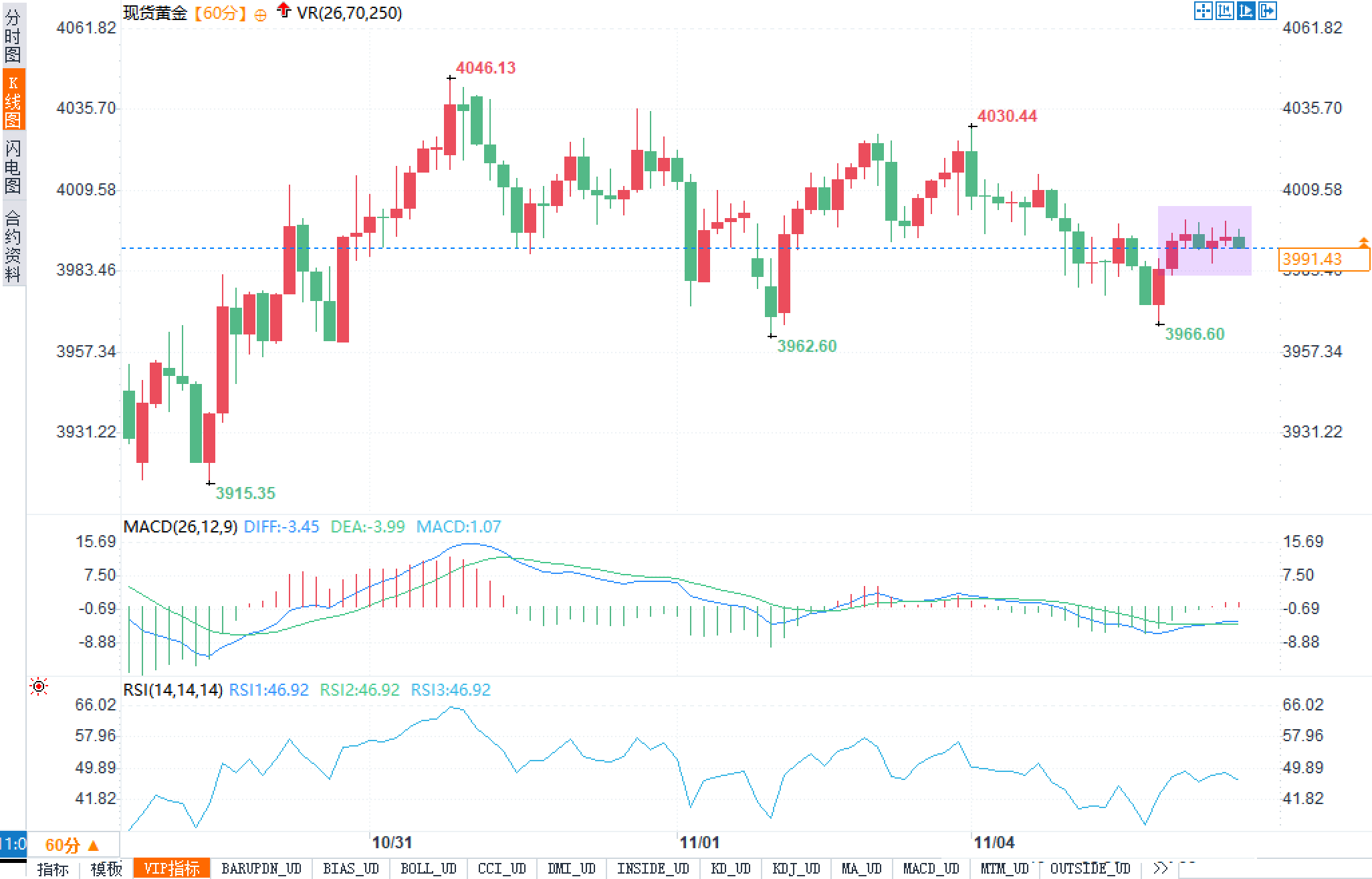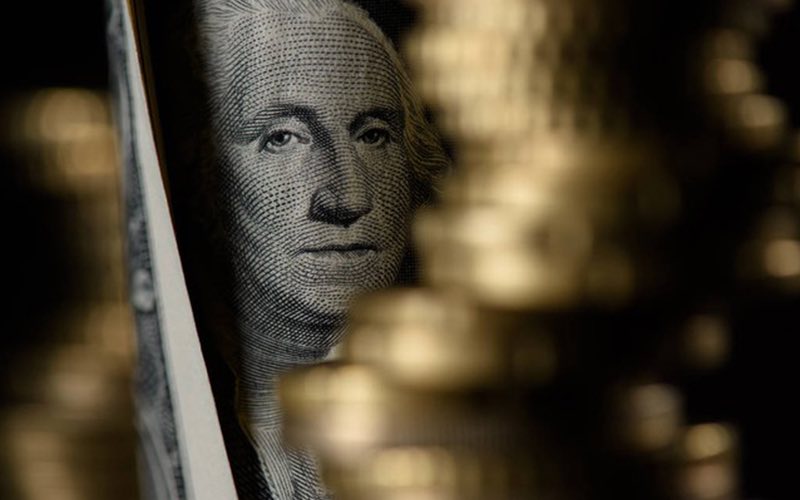Gold Analysis: Dollar Holds Firm at 100 Levels, 3960 May Become a Graveyard for Buyers?
2025-11-04 20:59:59

Fundamentals: A strong dollar and divergence within the Federal Reserve are limiting upside, while safe-haven demand and equity pullbacks are providing downside support.
The recent relative strength of the US dollar, coupled with the cautious tone of Federal Reserve officials, has cooled market expectations for rapid easing this year, limiting the upward momentum of gold. Several Fed officials signaled a "shared direction but different pace" on Monday: On the one hand, Governor Cook emphasized that inflation remains above the 2% target and may become more sticky in the future due to tariffs, requiring policy to continue to "focus on restoring price stability," although she also acknowledged that the previous 25 basis point rate cut was aimed at offsetting downside risks to employment; on the other hand, Chicago Fed President Goolsby remained cautious about "preemptive easing," stating that inflation remains "worrying," while Governor Milan cautioned that "it is unreliable to extrapolate policy conclusions solely based on financial conditions," and indicated that a return to neutral levels could be achieved gradually through "consecutive 50 basis point rate cuts," but "there is no need for an aggressive 75 basis point move."
Following the aforementioned statements, market pricing in a December rate cut has cooled somewhat: interest rate tools indicate that the probability of a 25 basis point cut at the next meeting is around 70%, a significant drop from 94% a week ago, but a slight increase from 65% the previous trading day. This combination of "cutting rates while remaining cautious" means gold faces two forces simultaneously: firstly, the slow downward revision of discount rate expectations provides medium-term support for gold prices; secondly, the temporary resilience of the US dollar and US Treasury yields is suppressing the upward momentum of gold prices.
Meanwhile, global risk sentiment remains in a state of "not bad but not good." The recent pullback in equity markets has weakened risk appetite, leading some funds to flow back into hedging assets, thus creating an observable buying band in the $3960-$3970 range. Geopolitical and macroeconomic uncertainties have not yet cleared, and the extended discussion cycle surrounding fiscal and regulatory issues continues to contribute to the "term premium" in precious metals.
Technical aspects:
The hourly chart shows that after rebounding from the low of $3962.60, the price has formed a sideways trading range, fluctuating between $3980 and $4000 in the short term. The candlesticks are mostly small-bodied alternating bullish and bearish candles, a typical consolidation market characterized by "no increase in volume and no clear direction." The first resistance level to watch is the psychological level of $4000 and the previous high of $4030.44. A break and hold above these levels could open a channel towards $4046.13 or even higher. Support levels are concentrated at the adjacent levels of $3966.60 and $3962.60. A break below these levels would likely lead to a retest of the dense lows around $3915.35.

In terms of indicators, the MACD gives a signal of "from weak to stable": DIFF is -3.45 and DEA is -3.99, still below the zero axis, but the histogram has turned positive to 1.07, indicating that the bearish momentum is weakening and there is endogenous power for a short-term technical rebound. RSI (14) is at 46.92, which is in the neutral to weak range below 50, indicating that the balance between bulls and bears is slightly tilted to the bears. Only if it breaks through the 50-55 range can it be said that the momentum and price are strengthening in tandem.
Based on the overall pattern and indicators, the most accurate description at present is "range-bound oscillation + potential upper limit test". If there is a significant increase in volume and a valid breakout of the $4000-$4030.44 resistance zone followed by a pullback confirmation, it can be considered a victory for the bulls in this phase. Conversely, if there is a significant increase in volume and a break below $3962.60, the downside will target the historical support zone of $3915.35, at which point the risk of a weakening consolidation will increase significantly.
Market Outlook: Range-bound trading, direction depends on the "policy-dollar-risk" triangle.
Short term (several days to one week): Maintain the sideways trading range view. Watch the double resistance levels of $4000 and $4030.44. A break above these levels, accompanied by a continued expansion of the MACD histogram into positive territory and the RSI crossing above the 50-55 range, would target $4046.13. Conversely, if the US dollar strengthens again and yields rise, gold may fall back to the $3966.60-$3962.60 range, with a potential target of $3915.35 if this level is breached. Only a significant breakout with substantial volume within this range could change the current assessment of a "sideways trend."
In the medium term (around one month): If the Federal Reserve continues its "cautious rate cuts," nominal interest rates will decline slowly while real interest rates are unlikely to fall rapidly. Gold may maintain a "wide-range fluctuation" with resistance above and support below, fluctuating around the $4,000 level. If external geopolitical or financial system pressures increase, it will temporarily boost the safe-haven premium, causing prices to test previous highs. Conversely, if inflation is stickier than expected and the dollar strengthens significantly, the gold price's central range may passively shift downwards.
- Risk Warning and Disclaimer
- The market involves risk, and trading may not be suitable for all investors. This article is for reference only and does not constitute personal investment advice, nor does it take into account certain users’ specific investment objectives, financial situation, or other needs. Any investment decisions made based on this information are at your own risk.





















